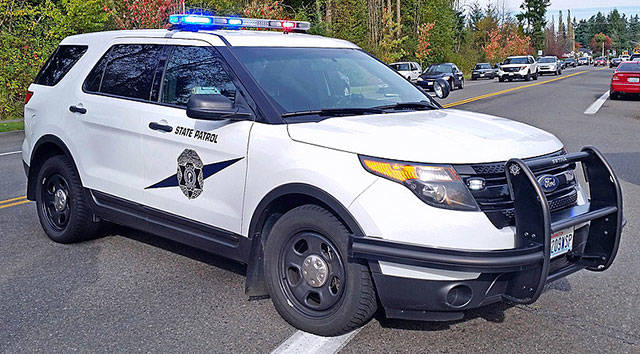The Washington State Patrol (WSP) will conduct a statewide Slow Down, Move Over emphasis from Aug. 23-25. The purpose is to help troopers, roadway workers, emergency responders and citizens stay safe and bring awareness to the Move Over Law.
RCW.46.61.212- Approaching Emergency Zones is the Move Over Law. The law was updated this spring to stress the importance of slowing down if vehicles can’t move over a lane to get crews in emergency or work zones extra space, according to a State Patrol news release. It requires that vehicles approaching an emergency or work zone should proceed with due caution, and if safe move over, or change lanes. If changing lanes is not possible, drivers should reduce their speed to 10 miles under the posted speed limit.
Emergency or work zone vehicles include:
• Authorized emergency vehicles using audible or visual signs
• Tow trucks making use of visual red lights
• Vehicles providing roadside assistance using warning lights such as WSDOT Incident Response Trucks
• Police vehicles displaying a flashing, blinking, or alternating emergency light
• Stationary or slow moving highway construction or maintenance vehicles, solid waste vehicle, or utility service vehicle making use or flashing or warning lights
An Emergency or Work Zone is the adjacent lanes of the roadway, and includes 200 feet before and after the emergency or work zone vehicle.
If there are two lanes going in the same direction, move completely into the left lane. The penalty is $214 and cannot be waived or reduced.
The Washington State Patrol contacted 4,764 drivers for ‘move over’ violations in 2018.
Crews working on shoulders or closed lanes work just inches from moving traffic, so giving them some extra space helps keep everyone safe and traffic flowing. Inattentive driving, following too closely and speeding are the top three causes of work zone crashes on state roads – and all are preventable if travelers slow down and pay attention in and near work zones. These are our friends and neighbors; they are professionals simply doing their jobs. Let’s respect and appreciate them by keeping their work areas safe.
Troopers put themselves at risk everyday keeping our roadways safe. Since 2016, 104 patrol cars have been hit on the side of the road, leaving 27 injured. Since its inception in 1921, 29 WSP troopers have died in the line of duty. A number of those losses were due to inattentive or reckless drivers at the scene of previous collisions or drivers not paying attention to emergency lights and conditions.



